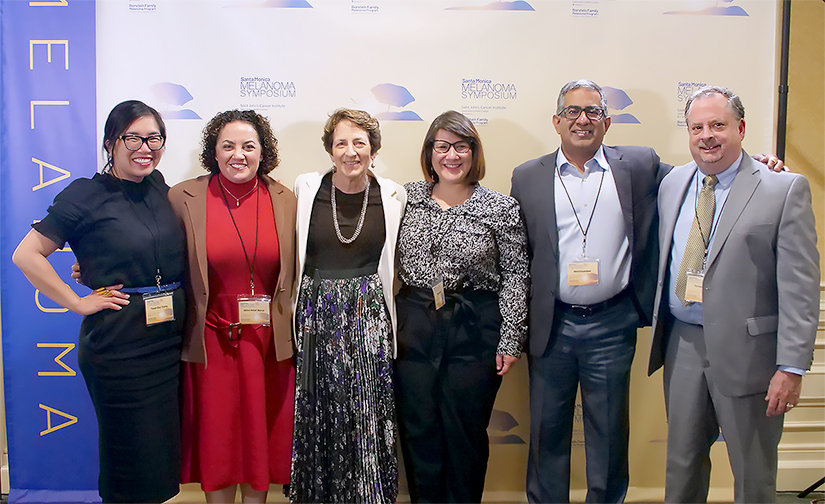
Outstanding Speakers, Outstanding Presentations
The Santa Monica Melanoma Symposium held its 2nd annual event at the Fairmont Miramar Hotel & Bungalows, Saturday, April 29th, 2023. It was a free CME event for medical professionals that focused on trends, research, and questions regarding melanoma, and non-melanoma cutaneous skin cancers. Many to attend were specialists in their fields. Dermatologists, surgeons, and medical oncologists joined the discussion. After each talk, the floor opened to Q&A, in which the lecturer and attendee discussed open issues, ideas, cases, and concerns.
The Wedgeroom ballroom overlooks the Fairmont Hotel’s entrance and towering in the middle of the round-a-bout, is a massive tree. Beyond that, the Pacific Ocean. The morning was quiet, and attendees took to their seats with the program, name badge, and a customized journal and pen with the logo of the Santa Monica Melanoma Symposium. The hotel catered breakfast, and lunch. Breakfast was hearty for locals and travelers serving scrambled eggs, sausage, bacon, plenty of pastries, butter, fruit, and berries. Accompanied by choices of juice, orange, grapefruit, and cranberry; hot coffee and tea were available for the duration of the symposium. Spring floral arrangements decorated the room and a step-and-repeat for photo-ops lingered in the background while presenters and attendees gathered around for a quick bite before the symposium started.
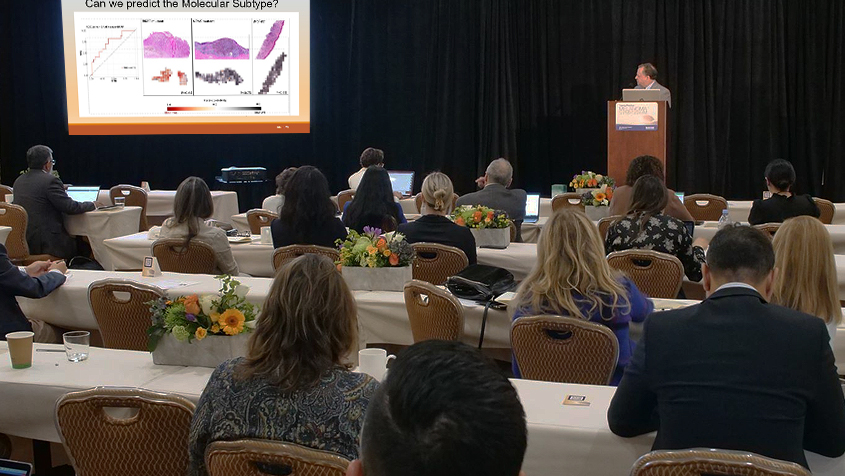
The first two talks were sponsored-related. Dr. Essner discussed Castle Bioscience, followed by Sahar Abdullah, MD, from Caris Life Sciences.
The event kicked off with Castle Bioscience Talk. This presentation pertained to the implementation of gene expression profiling in the management of cancer presented by Dr. Essner. Specifically, collaborating with NCI and linking clinical testing with patients captured in the NCI-SEER registry on cutaneous melanoma cases.
Sahar Abdullah, MD, senior medical director for Caris Life Sciences, presented ways to obtain grants for research, and fodder for ideas to generate hypotheses and connect with a broader research audience. How? They have an online POA repository, “giving you more granular information,” for generating a hypothesis. Their online database allows for data analysis for researchers. She spoke at length regarding CODE AI, which helps individual investigators plan phase one trials. Other topics she touched on were pathogen panels, viral fungi bacterial databases, immuno-antigen loads, chromosomal Carian types, and immune-cell characterizations. They are partnered with 81 leading cancer centers, collaborating to deliver molecular sciences solutions to promote clinical trials. They combine clinical genomic data, with collaborative research and publications; 37 NCI cancer sites, and 17 hybrid communities around the globe.
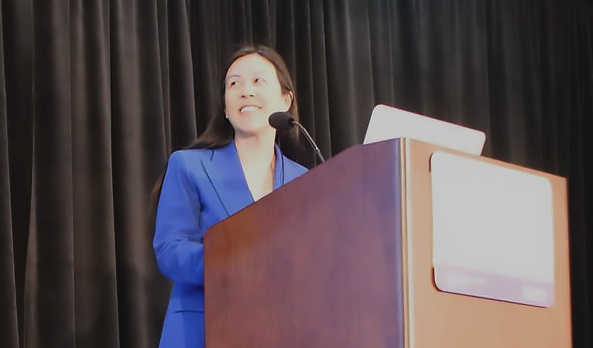
Dr. Allan Halpern, who is from Memorial Sloan and Kettering Cancer Center in New York, Zoomed-in over the projector to talk on the opportunities and challenges that dermatology faces with imaging and Artificial Intelligence (AI), The International Skin Collaboration (ISIC), and discussed at length, the barriers and risks for AI in dermatology. He noted, the biggest barriers are the datasets; you need large, unbiased (quality), and representative (skin, age, exposure, lesion, complexion) datasets because most datasets are siloed with huge privacy issues. Another barrier he noted exists at the core of AI and how it is programmed. “AI doesn’t know what it doesn’t know,” and “democratization of access to online images may create an epidemic of biopsies and overdiagnosis.” He said expert physicians will benefit from AI, but it’s not ready for primetime because more clinical trials are necessary. He also noted that digital health is a megabillion-dollar business, calling it teledermatology.
Next to speak was Dr. Bruce Ragsdale, a dermatopathologist from Western Pathology in San Luis Obispo, California. He spoke on the pathology of mucosal melanoma. “The most reliable diagnosis will come from a dermatologist who is fully informed of lesion location, size, appearance, endurance, and change,” he remarked. Topics he covered were occult primary melanomas: lymph node, lung, gallbladder, pancreas, hepatic, esophagus, GI function, rectal, cervical, and more. He spoke also about patients who had urethral melanoma, vulvar melanoma, ovarian melanoma, and placental melanoma. It wasn’t as dry as a talk as one would suppose. Dr. Ragsdale has a keen sense of humor.
Dr. Richard Essner from Saint John’s Cancer Institute, spoke on the surgical principles of advanced melanoma, and primarily asked, what is the role of surgery and who should be considered for surgical resection? Is surgical resection needed before or after surgery? He compared human to machine learning algorithms for diagnosing pigmented skin. He also spoke on whether it was important to reduce lymph node recurrence.
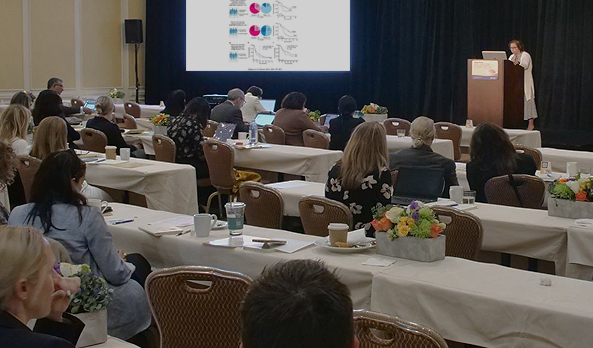
Dr. Amaria went further and said neoadjuvant therapy may improve outcomes over adjuvant therapy in high-risk stage 3 melanoma cases, and she discussed if adjuvant therapy is required in neoadjuvant trials so there is less of a need for surgery. Dr. Amaria also affirmed, “targeted therapies are not as durable as we like,” stating some patients don’t have a path response.
Dr. Thach-Giao Truong from Kaiser Permanente in Vallejo, California, presented, Frontline Therapies for Unresectable Metastatic Melanoma. She discussed FDA-approved frontline checkpoint inhibitors and combination therapies for stage 4 melanomas. She further noted the adverse events with checkpoint inhibitor therapy, and asked, what is the best frontline therapy for stage 4 melanoma?
Dr. Nikhil Kushalani, from Moffit Cancer Center, spoke on the highlights of non-melanoma skin cancers (the only one to take on the daunting task of all other skin cancers). He provided updates and data points on immunotherapy in advanced non-melanoma skin cancers. He discussed neoadjuvant immunotherapy in cutaneous squamous cell carcinoma, immune suppression, and skin cancer, and anti-PD1 therapy as an effective option for patients but suggests there need to be improvements. He lastly talked about mutational profiles of Merkel cell carcinoma and high response rates to immunotherapy. He said non-melanoma-related skin cancers are associated with 4,584 million dollars per year in medical costs.
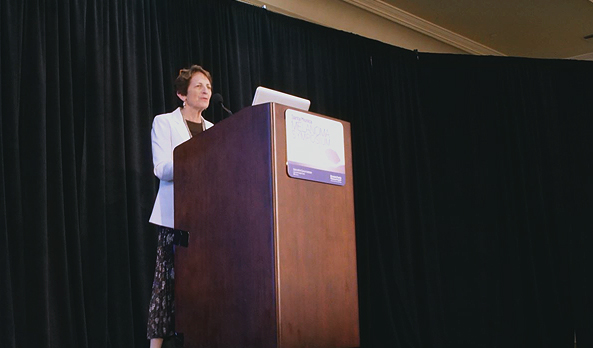
Dr. Margolin also discussed when and if adjuvant therapy was beneficial, the rationale behind anti-PD1 neoadjuvant therapies, and when is the appropriate time to treat with neoadjuvant and adjuvant therapies. She discussed biomarkers in melanoma, and that there is good and bad news with that; there aren’t many. She said there is rapid progress in systemic therapies, and that predictive markers may continue to expand treatment options but more importantly, she discussed why it’s important to balance the benefits with the risks of new agents.
Dr. Jeffrey Sosman from Northwestern University’s Feinberg School of Medicine presented, Immune Checkpoint Toxicities—The Dark Side of Immunotherapy. Some key issues he brought up were manifestations of immune checkpoint therapies, and features of toxicity of anti-PD1, PDL1, and CTLA4 therapies. He spoke about the cancer immune cycle, and how immune checkpoint toxicity is limitless. Adverse events from immune checkpoint inhibitors, and how autoimmunity can affect an organ system. He stated that rheumatology is under-recognized as an adverse event.
Dr. Allision Betof-Warner from Memorial Sloan and Kettering Cancer Center in New York discussed, Cell Therapy and Bi-Functional Effector Cell Engagers. One fascinating, yet distressing, point she highlighted was how 30 percent of patients with advanced melanoma will present with brain metastasis at diagnosis, while 70 percent will have brain metastasis at the time of death. Her point, few trials allow for active brain metastasis.
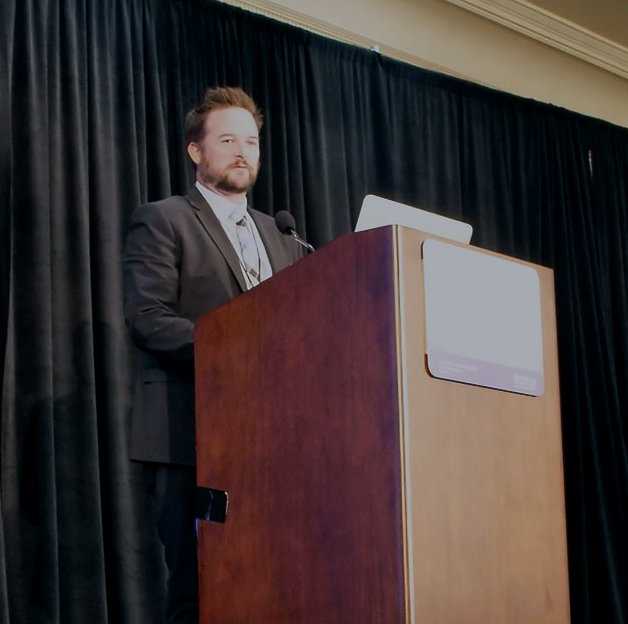
Dr. Maria Ascierto from Saint John’s Cancer Institute presented, Immunology of Melanoma Brain Metastasis. In her presentation, she reveals which stage of cancer in which brain metastasis is most prevalent, ranging from ten to twenty percent occurring in stage 4 melanoma and “up to 50% over the course of disease.” These findings have had a historically low survival rate. Modern treatments, including Stereotactic Radiosurgery (SRS) and immunotherapy, have become the standard of care in late-stage melanoma.
Dr. Antoni Ribas from UCLA’s Jonsson Comprehensive Cancer Center presented, Immunology of Melanoma. He discussed somatic point mutations and neoantigens presented by HLA molecules to T-cells. “Antitumor t-cells are rare. Cancer cells that are 40 meters away from the cancer can change the cancer, to make that enabler have an immune response; there’s a genetic experiment involved.” He further discusses antigen-specific T-cells, which are so rare, that maybe there is one in one million lymphocytes in a tumor. He asked, so how can they overcome the unwelcoming tumor microenvironment that lead to responses in metastatic cancer? Well, if you came, you would know.
We hope to see you next year in 2024 for our 3rd Annual Santa Monica Melanoma Symposium!
Thank you to the sponsors, Castle Bioscience, Integra, Novartis, and Merck! This symposium would not have been possible without the generosity of the Borstein Family Foundation, and the Saint John’s Cancer Institute.
Program Directors:
Dr. Richard Essner
Dr. Kim Margolin

